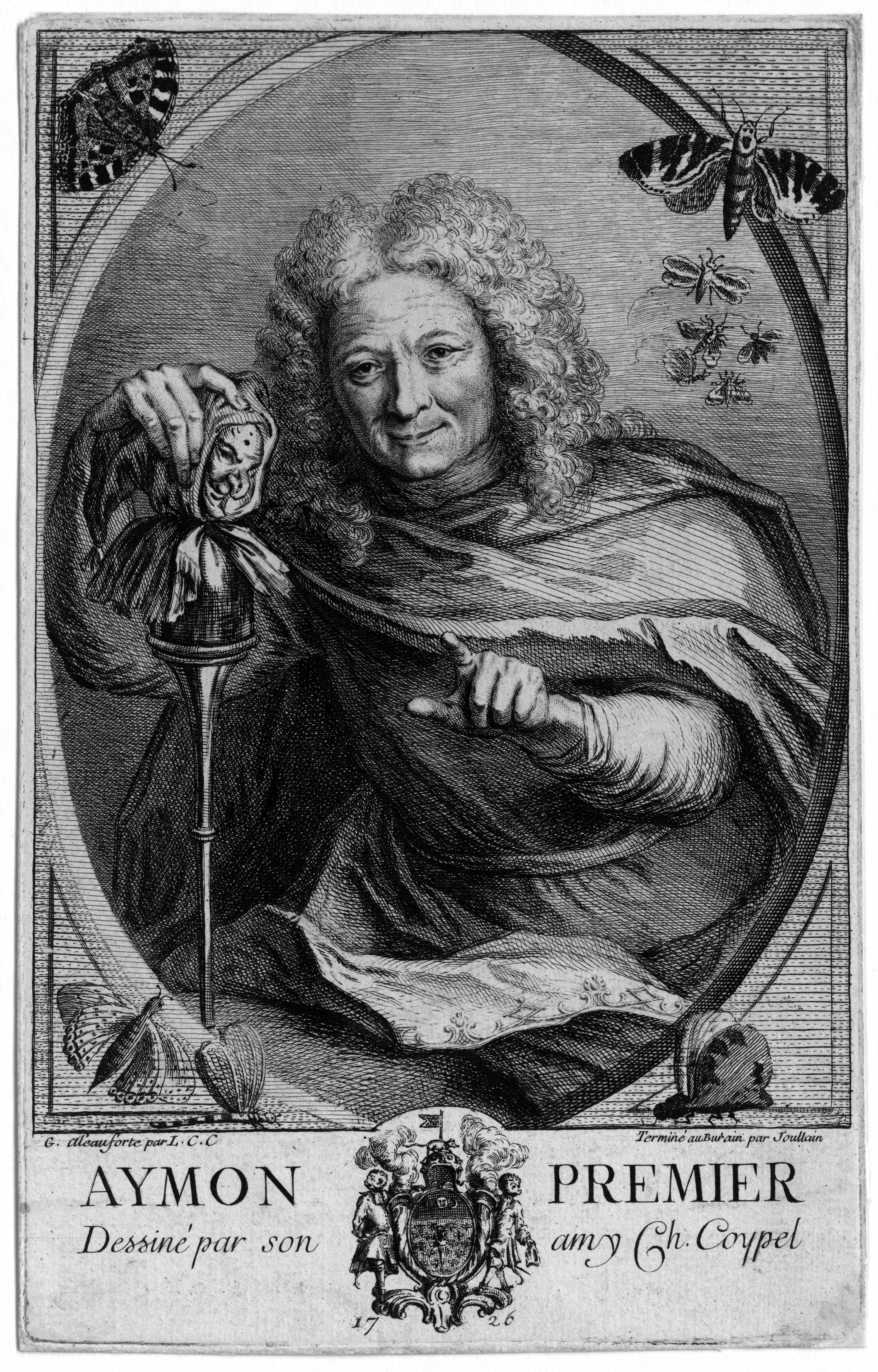Loading the page ...
Anne-Claude-Philippe de Tubières Comte de Caylus
(1692–1765, Paris)
Aymon Premier. Etching and engraving, after Charles Antoine Coypel. 28.5 x 18 cm. 1726. Inventaire du Fonds Français (Joullain) 25 IV; Robert-Dumesnil (Coypel) 23 III; Le Blanc (Joullain) 57.
This unusual and highly original etching by Anne-Claude Philippe de Tubières, based on a no longer extant drawing by Charles Coypel, features the portrait of Étienne-Isidor-Théophile Aymon (1659– 1731), portemanteau or valet to Louis XIV. Together with Philibert-Emmanuel de Torsac, Aymon was co-founder in 1702 of the so-called Régiment de la Calotte, a kind of “society of fools” which was very active, especially during the reign of Louis XIV and the government of Louis XV. The Calottists were an informal brotherhood which issued fools’ awards to rulers and courtiers whose improper behaviour had exposed them to ridicule. To underline the society’s foolish ambitions Aymon tellingly holds a marotte in his right hand. This is a doll mounted on a stick which was originally used in puppet theatre and, in the fine arts, was an attribute of Momos, the personification of mockery and censure. The marotte, a symbol of foolishness, is also referred to as a “jester’s bauble”. The motif of the marotte, like the butterflies arranged around the portrait, comes from the coat of arms of the Régiment de la Calotte inserted in the lower text margin, where it is flanked by two monkeys in courtly attire.
The author of this delightful etching, Anne-Claude Philippe de Tubières, Comte de Caylus, was an antiquarian bookseller, writer, collector and etcher and from 1731 an amateur member of the Académie Royale de Peinture et de Sculpture. The address states that the Parisian engraver and publisher, Charles-Francois Joullain (1697–1778), reworked and completed the etching with a burin. This rare print is compelling not just because of its imaginative mise en page, but also by virtue of its refined technical execution. A very fine, strong impression with thread margins around the distinct platemark. Slight condition problems, otherwise excellently preserved. From the collection of Roland de Perthuis, Paris (Lugt 4237).
Contact us for further information